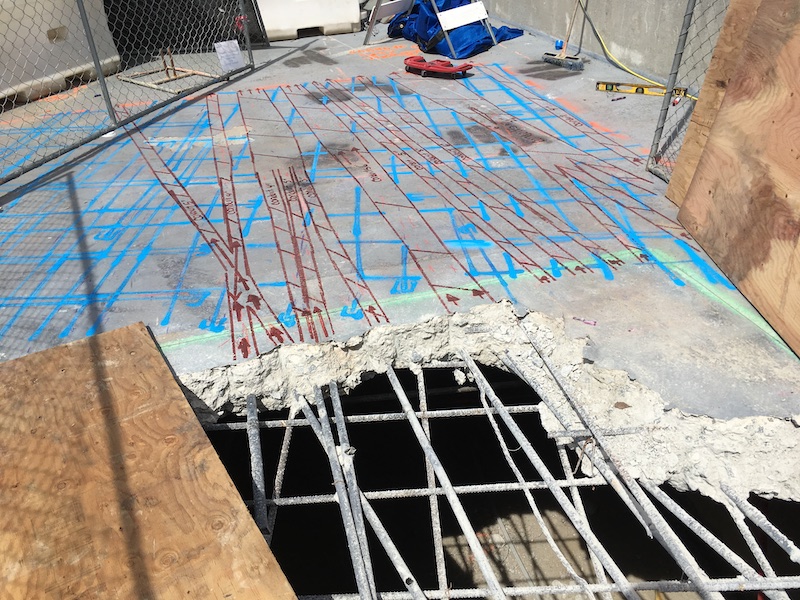Checking Out the Secret Advantages of Concrete Scanning in Building And Construction Projects
In the realm of modern-day construction techniques, the use of concrete scanning innovation has emerged as a pivotal tool for ensuring job effectiveness and structural stability. From boosting security actions to accurately detecting utilities concealed beneath the surface, the benefits of concrete scanning are complex. RainierGPR Concrete Scanning.
Enhanced Precaution
Using sophisticated concrete scanning modern technology enhances safety steps on building websites by giving accurate detection of potential risks hidden below the surface. This innovation allows building and construction groups to recognize rebar, avenues, post-tension cords, and various other blockages prior to excavation or boring, substantially lowering the threat of crashes. By identifying these elements specifically, workers can avoid damaging important architectural components, hence stopping injuries, hold-ups, and expensive repair services.
Furthermore, concrete scanning plays a crucial function in making sure the stability of existing structures throughout growths or renovations. By spotting weaknesses, gaps, or degeneration within concrete aspects, engineers can address these concerns proactively, boosting the overall safety and long life of the building. This aggressive strategy not just reduces the risk of architectural failings but also decreases the possibility for mishaps caused by unpredicted structural shortages.
Fundamentally, the implementation of concrete scanning innovation functions as a proactive precaution that safeguards both building and construction workers and the architectural stability of buildings, inevitably contributing to the total success and effectiveness of building and construction jobs. - RainierGPR Concrete Scanning
Accurate Discovery of Energies
Concrete scanning technology promotes accurate recognition of below ground utilities, improving construction website safety and effectiveness. Exact detection of energies is essential in building projects to avoid costly damages, task delays, and most significantly, make certain the safety of employees and the public. By using innovative scanning technologies such as ground-penetrating radar (GPR) and electromagnetic induction, building and construction teams can draw up the location of buried pipes, cords, and various other energies with high levels of accuracy.

Time and Price Efficiency

Concrete scanning innovation makes it possible for building groups to accurately find rebar, post-tension cables, and other embedded things within concrete structures. This accurate details helps in preventing costly errors such as unexpected damage to crucial elements throughout exploration, cutting, or coring activities. In addition, by recognizing prospective threats beforehand, the need for costly fixings or rework due to damages can be lessened, leading to cost savings for the task.

Furthermore, the capability to promptly and properly detect utilities underneath the surface area without creating any kind of damages not just saves time but likewise avoids expensive disturbances to existing framework. On the whole, the moment and price performance advantages of concrete scanning make it an invaluable device for boosting building and construction task monitoring and implementation.
Conservation of Architectural Honesty
Maintaining the structural stability of buildings and infrastructure is Full Article critical in guaranteeing long-term stability and safety. Concrete scanning plays an essential duty in about his this conservation procedure by enabling construction professionals to recognize possible dangers to the architectural stability of a structure or facilities before they escalate right into significant issues. Through the usage of innovative scanning technologies such as ground-penetrating radar (GPR) and electro-magnetic induction, building teams can non-invasively assess the problem of concrete structures, locate rebar, post-tension wires, and various other embedded aspects, and identify any kind of spaces, cracks, or damage within the concrete.
Improved Job Planning
In order to make certain the effective implementation of building projects, thorough interest to information and detailed planning are essential parts that stem from a thorough understanding of the structural conditions recognized with concrete scanning. Boosted project preparation, helped with by concrete scanning, permits construction groups to preemptively address prospective challenges, designate sources much more successfully, and establish reasonable timelines. By accurately determining the area of rebar, post-tension cable televisions, and various other embedded items within concrete frameworks, task managers can develop a lot more precise building strategies that minimize the danger of pricey mistakes or delays. Additionally, the information website link gotten from concrete scanning enables stakeholders to make educated choices pertaining to structural adjustments, renovations, or expansions, leading to smoother job changes and boosted overall project results. Eventually, including concrete scanning right into the task planning stage boosts sychronisation amongst team participants, promotes aggressive analytic, and contributes to the successful delivery of construction jobs within budget plan and routine restrictions.
Final Thought
To conclude, concrete scanning offers countless benefits in building projects. By boosting security steps, properly spotting energies, enhancing time and expense efficiency, maintaining architectural integrity, and assisting in job preparation, concrete scanning verifies to be a crucial tool for effective job implementation. Its capability to mitigate threats, enhance efficiency, and make sure job honesty makes it an essential property for construction specialists.
In the realm of modern-day construction techniques, the utilization of concrete scanning modern technology has arised as a critical device for guaranteeing task efficiency and architectural integrity.Concrete scanning innovation makes it possible for construction groups to accurately find rebar, post-tension cables, and other ingrained objects within concrete frameworks. Via the use of sophisticated scanning technologies such as ground-penetrating radar (GPR) and electro-magnetic induction, construction teams can non-invasively examine the condition of concrete structures, find rebar, post-tension wires, and other ingrained elements, and determine any kind of voids, fractures, or damage within the concrete.
In order to guarantee the effective implementation of construction tasks, precise interest to information and extensive preparation are important elements that stem from a thorough understanding of the structural conditions determined through concrete scanning. Ultimately, incorporating concrete scanning into the project preparation stage improves coordination among team members, fosters proactive problem-solving, and contributes to the successful delivery of construction tasks within budget and schedule restraints.